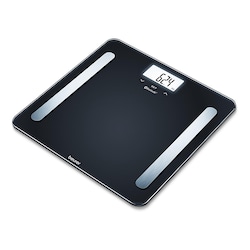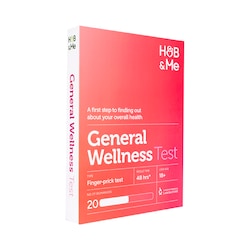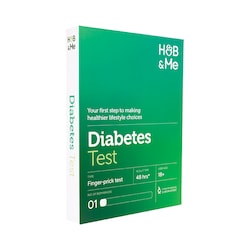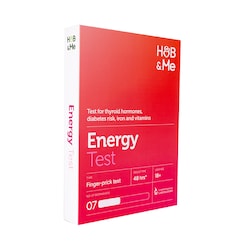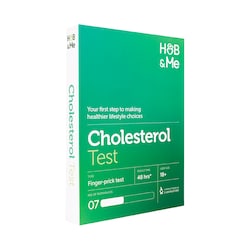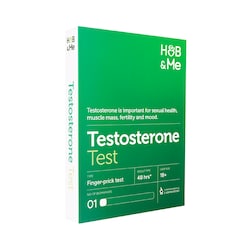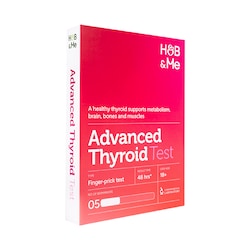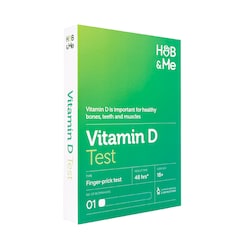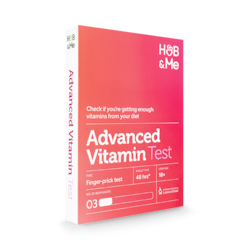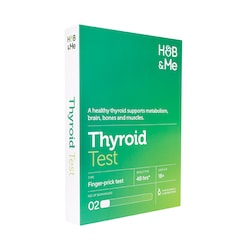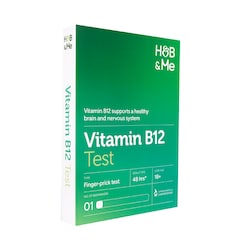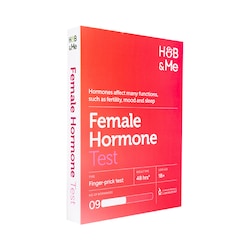20% off £30
What is at-home blood testing?
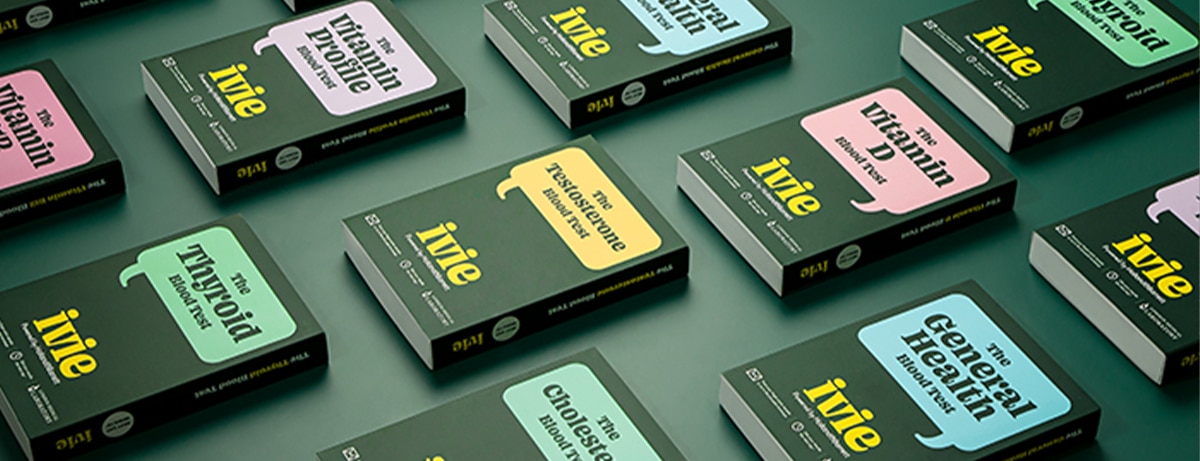
Most people will have had a blood test at some point in their life, whether for a routine check-up, a screening, or a specific condition.1 You’ll usually have your blood drawn by a nurse or phlebotomist, which can be uncomfortable or downright unnerving for some.
At-home blood testing is becoming more and more popular as a convenient and easier method of checking your blood and keeping an eye on your health.2 While at-home tests shouldn’t replace seeing your doctor for any concerns, they can help you better understand your health and get proactive about your wellbeing.
But what is at-home blood testing, how does it work, and is it reliable? Keep reading as we’ll give you the lowdown on everything you need to know about doing blood tests at home.
In this article: What is an at-home blood test? | What do at-home blood tests do? | What comes in an at-home blood test? | How to take an at-home blood test | Are home blood tests accurate? | The final say

What is an at-home blood test?
At-home blood testing involves drawing a small amount of blood from your fingertip using a handheld lancet. These little tubes of blood then get sent in the post to a lab where professionals review them. You’ll usually then get your results within 48 hours.
You can then take the results you get from your blood testing kit to your next doctor’s appointment to discuss them further, get more clarity on what they mean and discuss any concerns you might have.
What does an at-home blood test do?
At-home blood tests can answer most of the questions that a traditional blood test can by measuring a range of biomarkers in your blood to get an overview of your health. These biomarkers are specific characteristics found in your blood, and each test will pick up different ones, depending on the type of blood testing kit you take.
There are a variety of at-home tests you can take that will check for different biomarkers, from a thyroid test to vitamin B12 and more.3 Some of these tests include:

- General health tests
- Vitamin profile tests
- Thyroid tests
- Vitamin B12 tests
- Cholesterol tests
- Vitamin D tests
- Testosterone tests
General health blood tests
The general health blood test is the most in-depth and diverse, checking for 27 markers to ensure your body works as it should. This test looks for markers covering some of the most common conditions which impact your day-to-day health, some of which tend to have little to no symptoms.
Checking for these 27 markers means the general health blood test can analyse:

- Your liver function
- Your kidney function
- Your muscle and bone health
- Your iron levels
- Your cholesterol levels
- Your risk of diabetes
- Your risk of gout
Taking the general health test is a great way to keep on top of any potential issues and help you keep track of your health and wellbeing. However, it’s essential to note that these tests can’t give you a diagnosis, so for any concerns, you should always discuss your results with your GP. They can provide you with any help and advice you may need.4
What is in an at-home test?
In your test packet or box, you’ll find everything you need to do your test. This includes various pieces of equipment like:
- Lancets
- Plasters
- Pre-injection swabs
- Name labels
- Gauze swabs
- A protective packing wallet
- Blood collection tubes
- A pre-paid return envelope
How to take an at-home blood test
So how do you take an at-home blood test? Well, each test is different, so it’s important to make sure you follow the instructions listed with the product.
But here are 10 tips on how to do a blood test at home:
-
Register your test – use the QR code to register your blood test online.
-
Read the instructions – here, you’ll find a step-by-step guide to help you get your test right on the first try.
-
Choose your time and place – plan out when to do your test. It's worth doing your test at the beginning of the week (between Monday and Thursday) to get it back to the lab without delay. Otherwise, you risk your blood sample deteriorating, which can impact your results or even make your sample untestable. Some tests are best taken in the morning but check the instructions first.
-
Stay hydrated – drink plenty of water around 30 minutes before you take your test.
-
Keep warm and get your blood moving – consider taking your test after a warm bath or shower and do some light exercises to get your blood flowing.
-
Lay out your equipment – choose a clean, dry, and level area to lay out everything in your test.
-
Wash and dry your hands – keeping your hands clean and dry helps keep your results accurate.
-
Take your sample – make sure you’re standing up to take your blood, and try to keep your hand below your waist. Use the lancet to prick your finger (if you find the area sensitive, choose the outer edge of your finger). Gently milk your finger, without directly squeezing your fingertip, to fill the tube with blood.
-
Package up your test – seal up the test as the instructions tell you to and pack everything into the pre-paid envelope.
-
Send off your test and await your results – pop your envelope into your nearest priority post-box. Professionals will then analyse your test at the lab, and you’ll get your results within 48 hours.
Once you get your results, if the doctor who reviewed them in the lab feels you should check them over with your GP, they’ll highlight this in their report. Your GP can help you understand your results further and offer any help, support or more tests if needed.

Are at-home blood tests accurate?
You’ll also need to do you take your test correctly, taking care to read all the instructions. Make sure your hands and surroundings are clean and dry, as any contaminants (even water) can affect your results, don’t squeeze your finger too hard, and try to remember to take it at the right time of day too. Some tests, like testosterone tests, need to be done in the morning as this is when your levels peak, whereas others can be taken at other times of the day, but this will be stated in the instructions.
You’ll also want to make sure you provide enough blood, as giving more blood means your test has a higher chance of being analysed correctly.
The final say
Take your health into your own hands with an at-home blood test and say goodbye to long waiting times and restrictive appointment times.
Quick and easy, home blood testing kits give you a good insight into your overall health and wellness by checking for markers in your blood. But always remember to prepare well for your test and follow its instructions carefully to ensure you get an accurate result.
If you have any concerns or want to discuss your results further, always follow up with your GP, who can give you trained medical advice, care, and help.



